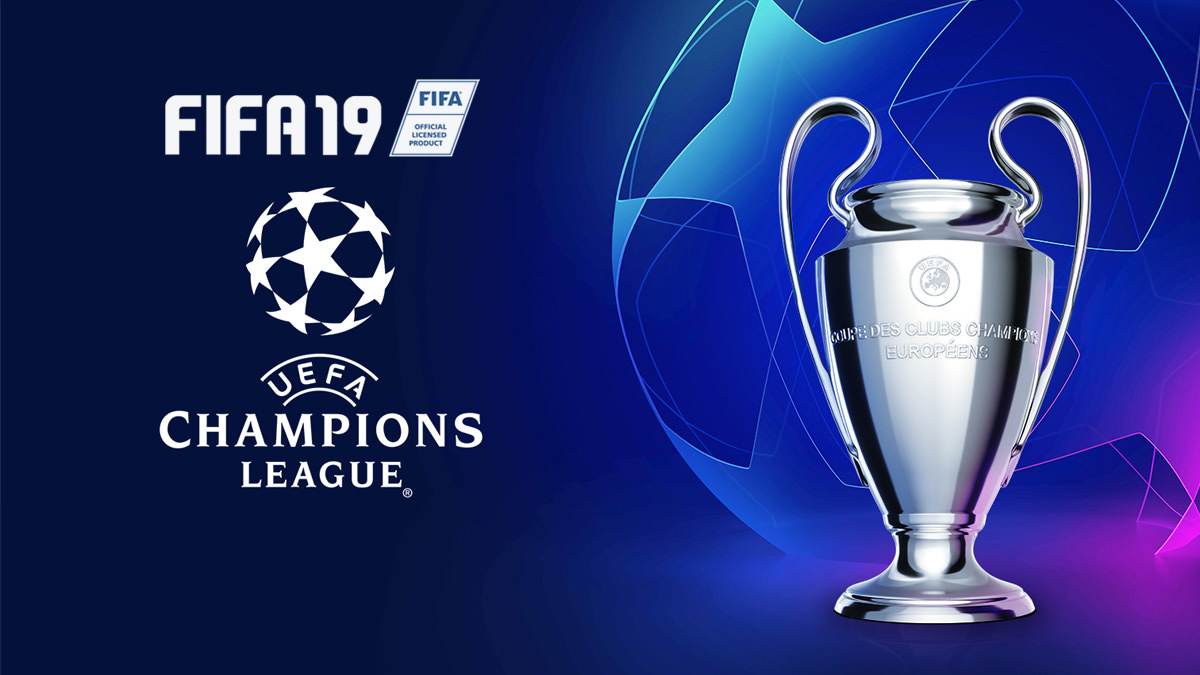- Uefa Cup: The End Of The Road For Mac Free
- Uefa Cup: The End Of The Road For Mac Download
- Uefa Cup: The End Of The Road For Machines
After the 2020 European Championships draw in Dublin, we give you the groups, explain how it all works, and share the latest odds. There was a time when the European Championship was more difficult to win than the World Cup. There were sixteen of the best teams in the world (minus Brazil and Argentina, of course). Then, in 2016, like an American diner, UEFA increased the size to 24-teams, and now a few tiddlers end up squiggling through the net reducing the intensity, but it’s still a bastard to win. The first tournament to have 24-teams was. It was the third time the French had hosted the tournament (give it to someone else then), and a crappy looking Portugal went on to win, minus in the final no less. As someone who is Wenglish, I was fortunate that the 24-team expansion allowed my home country of Wales to qualify for a major final for the first time since 1958.
The 40-year-old is regarded as an iconic figure of the world game, having won nine Serie A titles and the 1998-99 UEFA Cup among other prizes. However, his greatest achievement came in 2006, when.
They made it to the semi-finals, and I will always remember watching them beat Belgium with my Korean mother-in-law, and watching her leap into the air believing the Welsh had scored more goals each time the TV showed a replay. And now it’s back. With the oomph of the UEFA Nations League out of the way until next June, the road to Euro 2020 begins after the draw took place in Dublin. I feel a little sadness if I am honest. The UEFA Nations League pitted my beloved England with Spain and Croatia, and I loved watching those three going at each other’s throats like a woman on a man who has just farted in the bathtub. Now I get to see England batter the likes of the Czech Republic, Bulgaria, Montenegro and Kosovo. It’s not getting my grapefruits going.

Here are the groups in full. Czech Republic 3. Montenegro 5. Kosov Group B 1.
Luxembourg Group C 1. Netherlands 2. Northern Ireland 4. Belarus Group D 1. Switzerland 2. Republic of Ireland 4. Gibraltar Group E 1.
Azerbaijan Group F 1. Faroe Islands 6. Malta Group G 1. Latvia Group H 1. Andorra Group I 1. Kazakhstan 6.
San Marino Group J 1. Bosnia & Herzegovina 3. Leichenstein How to Qualify? Teams play round robin style, home and away, and the top two qualify for the Euro 2020 Championship Finals, which this year take place at Amsterdam, Baku, Bilbao. Bucharest, Budapest, Copenhagen, Dublin, Glasgow, London, Munich, Rome and Saint Petersburg. Easy peasy lemon squeezy.
Now to the harder part. I know your inner Caesar has figured out that makes 20-teams. What about the other four? For the first time in history, the four additional places could come from a different tournament: The UEFA Nations League. Here are the four finalists from each league. UEFA Nations League Group Winners League A – England, Netherlands, Portugal, Switzerland League B – Bosnia & Herzegovina, Denmark, Sweden, Ukraine League C – Finland, Norway, Scotland, Serbia League D – Belarus, Macedonia, Georgia, Kosovo are the rankings for each league in full.
Imagine England win League A, Denmark takes down League B, Finland conquer League C, and Kosovo win Group D – well, now you have your four additional teams. But what if these four teams have already qualified via the Euro 2020 Championship Qualifiers? Imagine England wins both the and the Group A Qualification Group?
If that happens then, the next best side in the UEFA Nations League Rankings gets the spot, and that’s excellent news for Iceland because I imagine all the teams ranked in League A will qualify via the Euro qualifiers except the team with the nasty case of the thunderclap. If I were a betting man, I would have a few quid on Iceland qualifying for Euro 2020. And that’s it. There isn’t anything else to talk about as there is no Group of Death. You could be Bob Dylan at his most stoned and still correctly pick the 20 teams that will qualify. Here are the odds. France 4/1 Spain 6/1 Belgium 8/1 England 8/1 Not a Germany in sight.
You don’t see that very often. Qualification begins in March.
Uefa Cup: The End Of The Road For Mac Free
Ten years ago a competition which had long been mercilessly mocked by football fans across Europe was finally put out of its misery. But does the Intertoto Cup deserve the derision it received, or should we give more credit to a tournament which offered hope to those outside the continent’s elite? Many clubs saw the Intertoto Cup as little more than a pre-season distraction, and several didn’t bother with it. Yet the competition managed to survive for almost half a century, suggesting it must have offered something worthwhile to its participants. The aim of the Intertoto Cup was to give teams who weren’t used to playing foreign opposition some magical moments that would live long in the memory. Yet with its elongated format and embrace of sides who had finished halfway down their domestic leagues, it was always fighting a losing battle. The competition was first played in 1961 under the slightly less glamorous title of The International Football Cup.
It was the brainchild of Eric Perssen, Ernst Thommen and Karl Rappan, three well-known and respected names in the game. Persson was chairman of Swedish club Malmo and a huge fan of European club competition, while Rappan was an experienced coach from Austria who had enjoyed spells in charge of FC Zurich, FC Lausanne and the Switzerland national team. Thommen, meanwhile, was head of the Swiss FA and had been instrumental in the creation of the Inter-Cities Fairs Cup, the precursor to the Europa League. Each member of the trio was keen to see the establishment of another continental competition for teams who were unlikely to qualify for Europe’s principal tournaments. There was more to it than that, however. Thommen was also the man behind a Swiss version of the football pools, and he had a vested interest in maintaining public interest in the sport throughout the year.
When the Intertoto Cup was born in summer 1961, UEFA were unwilling to sanction the competition due to its links with gambling, so Rappan, Persson and Thommen were forced to fund it themselves with help from Swiss newspaper Sport, who provided much-needed sponsorship. Quickly dubbed the “Cup for the Cupless”, the early days of the Intertoto Cup consisted of a group phase, knockout rounds and a one-off final. Fixture congestion proved to be a sticking point, though, particularly as the competition had to be squeezed in between the end of an exhausting campaign and the start of pre-season.

Clubs and players were reluctant to give up their summer breaks for the Cup, and fans needed some time away from the game too. Then there were the obvious financial and logistical challenges that many of these smaller, less wealthy clubs faced. Travel across the continent wasn’t as cheap or straightforward as it is today; the Intertoto Cup barely paid its way even for the winner. As a result, the latter rounds were scrapped and the team with the best record at the end of the group stage earned the right to whatever amount of prize money could be mustered. But this re-jigged format deprived competitors of a showpiece final or even a trophy to proudly display in the boardroom, leading many to question the point of its existence. Surprisingly, the Intertoto Cup lived to fight not just another day but another three decades. It was, however, largely seen as a pre-season kick-about for Europe’s unglamorous sides, many of whom used their participation as a springboard for greater things.
Hungarian side Videoton “won” the Intertoto Cup in 1984, before reaching the final of the UEFA Cup the following season, eventually falling to Real Madrid after a memorable win over Manchester United in the quarter-finals. Poland’s Gornik Zabrze could well point to their success in the competition as a catalyst for their subsequent four league titles on the bounce. But other than a few memories and a couple of thousand air miles, the competition provided little more than a road to football obscurity. No final and no tangible prize meant there was very little reason for clubs to involve themselves at all, although everything changed when the Intertoto Cup was thrown a lifelife in the mid-1990s. Having shunned the Intertoto Cup for the first 30 years of its existence, UEFA softened its objections to the competition in 1995, even going as far as to offer the victors a place in the first round of the UEFA Cup.
This gave the much-maligned tournament a renewed sense of purpose and clubs a real reason to participate. The revamp even caught the eye of English sides who had hitherto given the competition a wide berth. Premier League’s also-rans soon became aware of the Intertoto Cup’s potential as a back-door route into serious European competition, prompting the likes of Sheffield Wednesday, West Ham, Wimbledon, Aston Villa and Bradford to throw their hats into the ring with varying degrees of success.
Uefa Cup: The End Of The Road For Mac Download
West Ham’s march into the 1999 UEFA Cup was one of the high points for British clubs, but not everyone was convinced by the shake-up: Tottenham’s disregard for the competition was evident as they fielded a patched-up team of reserves and youth-teamers and duly lost 8-0 to Koln in 1995. The added incentive of a place in Europe’s second biggest competition provided the Intertoto Cup with its greatest ever fairytale, as French side Bordeaux – featuring a 23-year old Zinedine Zidane, Bixente Lizarazu and Christophe Dugarry – reached the UEFA Cup final in 1996 as reward for their 10-month, 20-match continental adventure.

Uefa Cup: The End Of The Road For Machines
Sadly, though, that was one of few success stories, and a number of changes to the tournament’s format eventually took its toll. The game’s so-called powerhouses suddenly wanted a piece of the action, recognising the potential of a lucrative mini-league in the summer months. Whereas group winners had come from the likes of Slovakia, Denmark, Hungary and Bulgaria when the competition was in its infancy, the Intertoto Cup began to be dominated by more familiar names from the Premier League, Serie A, Ligue 1 and the Bundesliga following UEFA’s intervention. At this point the tournament lost its unique selling point; combined with an increasingly convoluted qualification process for the newfangled Europa League, the Intertoto Cup suddenly found itself unable to compete. In an era where winning was everything and finishing second often resulted in the bullet for top-flight managers, what chance was there for a tournament which championed those who came sixth or seventh?
For that reason, few tears were shed when the plug was eventually pulled at the start of 2008/09. In truth, it wasn’t a surprise to see a competition which marketed itself as “unique in sport as there’s no final, no winner and no trophy” come to an end – only that it had managed to survive for so long.